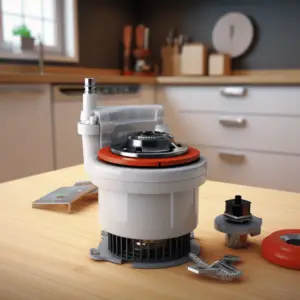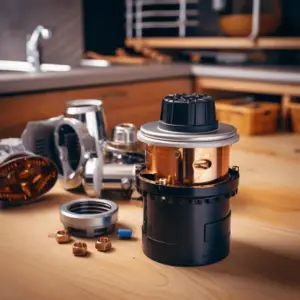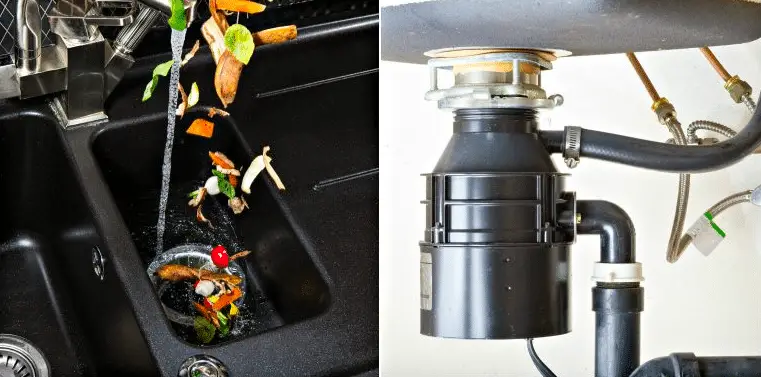Garbage Disposals machines provide an essential service in our homes and for the environment in general. Shredding food waste and dispensing it through plumbing systems solves the myriad problems involved in managing organic kitchen waste or what is loosely referred to as food waste.
Food waste accounts for a whopping 20% of the total waste produced in any home and upwards of 40% of the waste produced in eateries and other food-related businesses.
Eliminating this by collecting it and depositing it in landfills is problematic at every stage of the disposal process.
- Food waste contains a large amount of water which is cumbersome and expensive to ferry in garbage trucks.
- The job of collecting food waste is fraught with the added dangers of potential disease and sanitation issues not to mention the discomfiture of dealing with the unbearable stench.
- The frequency of round trips needed can only increase with time as households tend to expand over time not decrease.
- Food waste cannot be incinerated since it is inherently succulent.
- Food waste left to decompose in public is a health hazard and a massive contributor to global warming given the immense amounts of methane gas that decomposing organic refuse produces.
The rationale behind garbage disposal machines follows that since food waste is in many ways similar to human waste, by shredding it and depositing it in septic systems, it will decompose and be treated in the same way, and in advanced systems, the methane gas can be harnessed for energy.
Table of Contents
Garbage disposal: How it Works

Garbage disposal is composed of three main components;
- The upper hopper chamber which attaches to the bottom of your sink.
- A mid-section, which holds the shredder ring, the impellers or the blades, and the flywheel.
- The lower hopper chamber, which houses the mortar and connects to the exit waste pipe
The above is a rather simplistic description and garbage disposals are a more complex piece of machinery.
For the most part, garbage disposals are very unproblematic machines and if the manufacturers’ instructions are adhered to, these machines outlast homeowners without incident.
Most modern ones are so efficient, they come with automated troubleshooting mechanisms that can self-correct some hitches without the need for you to tinker with them or consult a professional.
The most common problem you may encounter with garbage disposal is jamming which is when the garbage disposal blades get stuck and won’t cycle the waste at all. You can solve this problem rather easily.
Garbage disposal has jammed: What to Do
The first thing you can attempt to do is use a long wooden item to try and move the impellers to get them rotating again.
- Turn off the garbage disposal at the dedicated circuit below the sink. This is very important. Grievous injury could occur if the impellers begin to rotate while you are attempting to retrieve the blockage that’s causing the problem.
- Use a wooden stick or something like the handle of a plunger. Lower the stick into the sink and leverage one of the blades. Tug slightly in an anticlockwise direction. You should feel when the blade has begun to move freely.
- Let cold water run down the drain after removing the stick.
- Turn on the garbage disposal and let it cycle through once. This should resolve the problem.
Use the Allen wrench
- Garbage Disposals the first method does not work, use the Allen wrench.
- Switch off the garbage disposal to protect yourself from electrocution.
- Feel around at the bottom part of the garbage disposal for an opening that should be at the middle of the surface.
- All modern garbage disposals come with an Allen wrench but if you do not have the one provided by the manufacturer you can simply buy one from the hardware store. It should be a ¼ inch standard size.
- Insert the Allen wrench in the opening you located and twist it back and forth. By doing this, you will also be moving the impellers back and forth dislodging whatever piece of food waste has caused the garbage disposal to jam.
- Once you feel the Allen wrench moving about without obstruction you have achieved your goal.
- Remove your Allen wrench.
- Run cold water into the drain.
- Switch on the garbage disposal and press the reset button that is somewhere near the opening you just used, to refresh the settings.
- Let the machine cycle once to free it of the food waste within.
Allen wrench stuck in the garbage disposal

Though highly unlikely, the Allen wrench can get stuck in the garbage disposal when you use it this way. This is usually the fault of design incompatibility or a flaw in the opening that clamps at the Allen wrench.
- Try tugging at the Allen wrench with slightly more force.
- If it does not come loose, switch on the machine anyway, press the reset button found at the bottom of the garbage disposal, and run copious amounts of cold water into the sink.
- Allow the machine to cycle the waste within and dispose of it.
- Once it is done, switch off the machine so that it does not cycle the next round of water you will need to pour into it.
- Now run very hot water into the drain continuously. The idea is to create a heated atmosphere within the garbage disposal causing the garbage disposal outer cavity, which is made of metal, to expand even if slightly.
- As the water fills into the garbage disposal and the outer casing begins to feel warm to the touch, wiggle the Allen wrench back and forth as well as downwards to free it from the garbage disposal.
- This should solve the problem and release your Allen wrench.
- Turn off the hot water and turn on the garbage disposal. Let the disposal cycle out the hot water.
- Reset the machine by pressing the reset button. Your machine should henceforth function normally.
- If anything does not go according to plan, do not attempt to dismantle the machine yourself. If the Allen wrench still does not release, it is best to consult a professional.


